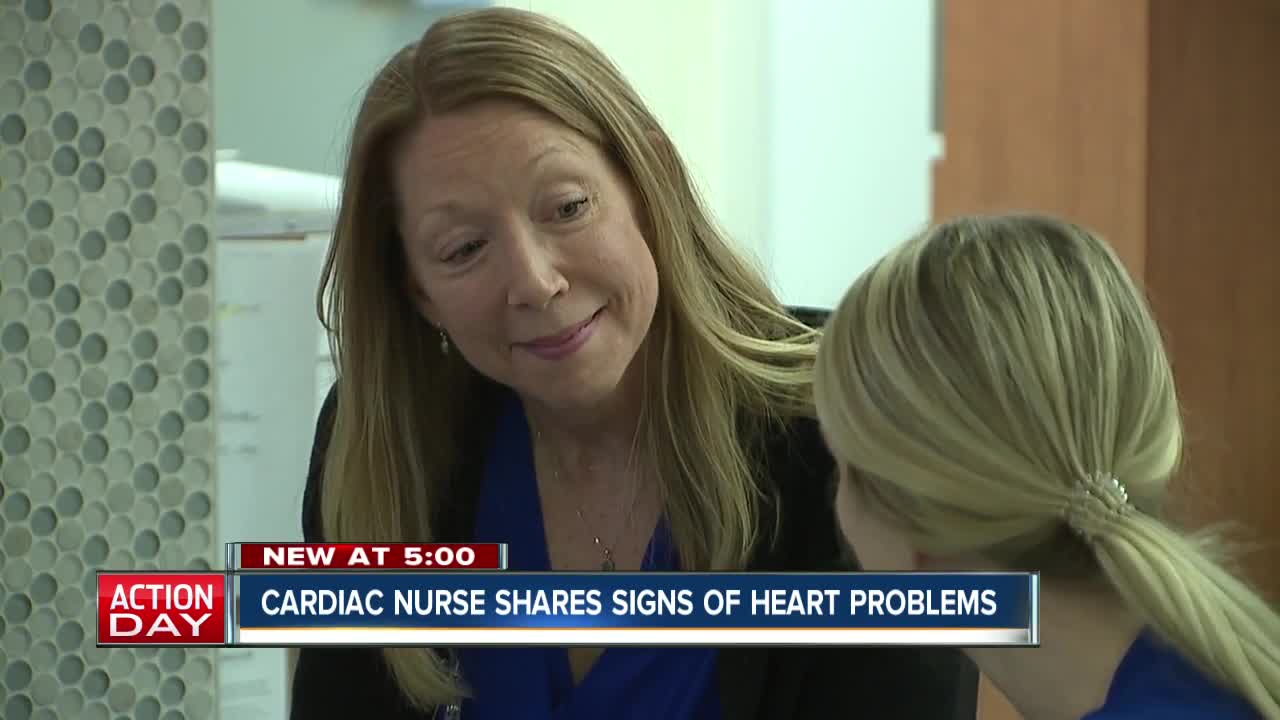DENVER – Jennifer Gaydosh has spent her entire professional career working at Rose Medical Center. She serves as the director of telemetry for the hospital, working with patients who have cardiac issues.
“I’ve seen a little bit of everything in my line of work,” Gaydosh said. “We get a lot of patients who come in with chest pain and heart attack symptoms.”
Gaydosh spends a lot of her time educating people about the signs and symptoms of heart disease.
She says too often, patients wait too long to seek help and she finds herself asking, “Why didn’t you come in? The delay between one and two days can be the difference between life and death or permanent heart damage.”
The signs of heart attacks can range from pain and pressure in your chest to nausea. Some of the symptoms include:
-Pressure in your chest
-An ache that comes and goes
-Pain in your jaw or arms
-Pain between your back scapula or pain in your upper back
-Sweating for no reason
-Shortness of breath while performing ordinary tasks
“If you feel something, say something. That’s kind of my motto,” said Dr. Vijay Subbarao, the director of cardiology at Rose Medical Center. “I would say any symptom that’s above your waist and below your jaw line.”
Both Subbarao an Gaydosh say people have a lot of excuses for why they choose not to get checked out. Many of their patients have busy careers and families to care for. Some write off the symptoms of a heart attack to things like indigestion or normal aches and pains.
But last year, Gaydosh had a huge reality check when she experienced her own heart attack.
“I woke up at about 2 a.m. on a Saturday morning with burning pain down my left arm. I was sweaty, I was nauseated, I was pale, so I did the right thing and I got myself to the emergency department,” she said.
However, her blood work and exams came back as normal, so she went home. Doctors told her that if she experienced more symptoms, she could come back.
Then that Tuesday, she woke up once again in the middle of the night with the same pain. Instead of going to the hospital, though, she went about her day as normal.
“I said, ‘Oh I was just in the hospital. I was cleared, they said I was fine, I must have just slept on my arm funny,'” Gaydosh said.
The pain in her arm continued for 36 hours straight – until a colleague urged her to check herself in to the hospital once again.
“After spending seven years of my life counseling patients on the signs of heart attack and not avoiding the signs of heart attack, I had a heart attack last year and I ignored my symptoms,” Gaydosh said. “I would say the irony was rich there and I’m lucky that I work in a hospital where I’m surrounded by other very smart health care practitioners who are not willing to explain away my symptoms.”
Gaydosh is young and healthy. She watches what she eats, is a self-described fitness fanatic, is skinny and constantly eats healthy foods.
She had no risk factors, her blood pressure was good; she has low cholesterol and is overall a very healthy person. Still, as a nurse she knows that heart attacks can happen to anyone.
“You can still have a heart attack,” she said.
Gaydosh suffered from a spontaneous coronary artery dissection, also known as a SCAD. It’s a relatively rare form of heart disease that mainly affects middle-aged women and those who just gave birth.
“Jennifer’s case is a really rare form of a heart attack in that there was a tear in the artery,” Subbarao said.
Now, she’s using her story as a teaching moment, hoping others will learn from her health scare.
She’s also learned quite a bit about why patients sometimes choose to write off their symptoms since she did it herself.
“I realized how easy it is to really convince yourself that you’re OK because that’s what we want. No one wants to say I think I’m having a heart attack,” she said. “Having gone through what I went through I can truly say I know how you feel I’ve been in that bed I know how scary it is to get this diagnosis.”
Meanwhile, Subbarao says he wants more people to be aware of the signs and symptoms and he’d like to see education and prevention start at a younger age – particularly in women.
“If you look at the mortality of women with heart disease, it is higher than all cancers combined,” he said. “Prevention is better than a cure but unfortunately the focus has not been there as much.”
Subbarao has a rule of two’s. He says people should work out for 200 minutes a week, have cholesterol of less than 200, have a body mass index of less than 25 and a blood pressure of less than 120 to keep themselves as healthy as possible and help prevent heart attacks.



